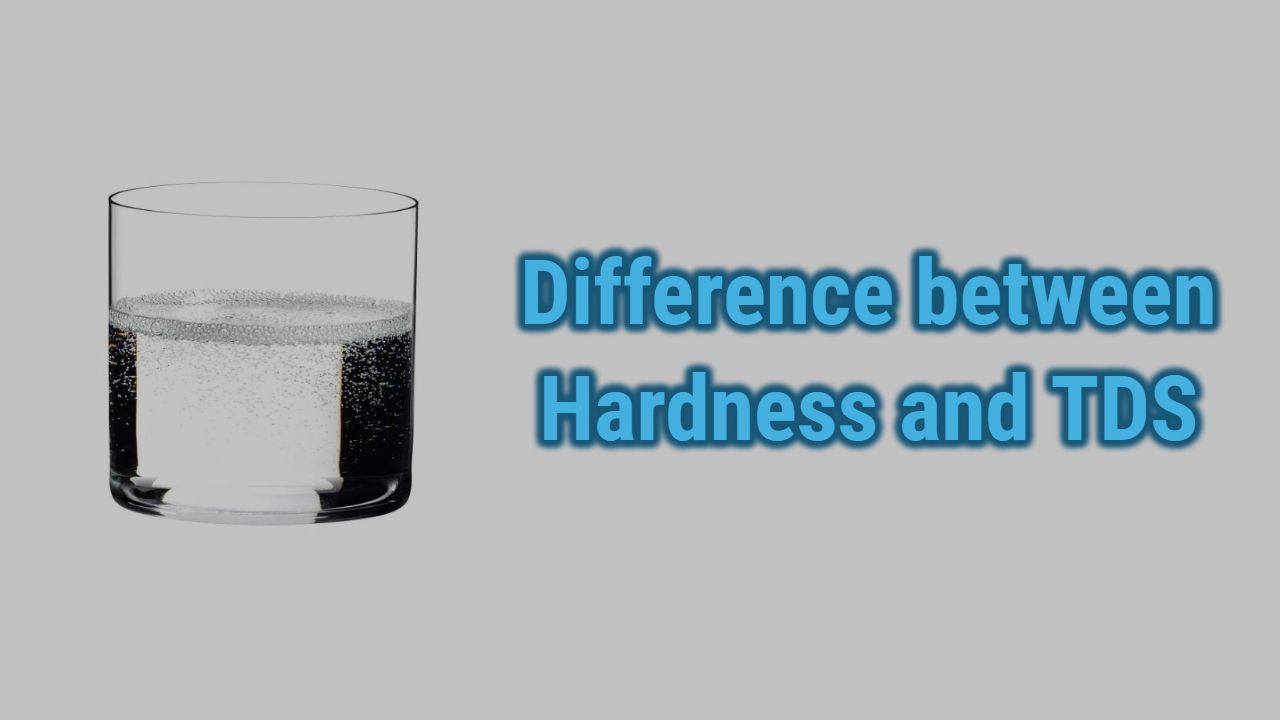When it comes to water, differentiating them according to the water taste, water quality, water mineral contents, or even its color is important. Knowing what kind of water we all should use for what purpose is very important to a healthy water habit.
Similarly, today, in this article, we will take you through two forms of water. That is water hardness and water Total Dissolved Solids (TDS), [hereafter, referred to as TDS]. The article will give a brief idea of what hardness is, its types, and other similar details regarding TDS.
Table of Contents
WHAT ARE TOTAL DISSOLVED SOLIDS (TDS)?
The main role of TDS is to measure the number of salts present in different types of water, like lakes, streams, ponds, and household and tap water required for drinking.
It basically shows you the taste of water by letting you know the amount of salt present in it. It is recommended that water below 150 TDS is fit for drinking. And however, above 300 TDS is considered unhealthy.
So putting it in simple terms, TDS shows the salinity of the water. TDS also measures various minerals, muds, scaling, ions, salts present in water, etc. It is mainly caused by inorganic and dissolved organic matter. TDS is measured by TDS kit using mp/u or ppm.
There are two methods to measure TDS, One is the Gravimetric Method, and the other is the Electrical Conductivity Method. The 1st method is the traditional method where liquid evaporates, and then the steam is converted into required water and then measures the TDS, leaving behind the residue.
The 2nd method used to measure TDS is by using ions and checking the conductivity level, and measuring TDS by TDS meter. The 2nd meter is generally used in rivers, pools, lakes, and streams, etc.
WHAT ARE WATER HARDNESS?
By water hardness, we mean the number of hard substances present in water. Hard chemical minerals like calcium, magnesium, and ion bicarbonates are present, which makes the water hard, known as water hardness. Hard water has a lot of scaling effects on pipes and home appliances, and other systems.
Due to this, the plumbing area is choked, and also, due to hard chemicals, hair fall and skin irritation can be an issue. Hardness also refers to the high mineral content present in water.
Hard water is generally formed when it gets in contact with limestone and chalk, the limestone and chalk present in rocks, and when the water passes through it, it gets hard and also collects hard elements on its way to the water path.
The hardness of water is measured by parts per million (ppm), and a hardness kit is used. There are two types of water hardness. One is Temporary Hardness, and the other is Permanent Hardness. The first one consists of calcium and magnesium; when these are dissolved, they make the water temporarily hard.
While the second one goes through the chlorides of magnesium and calcium, making the water permanently hard. And this hardness cannot be removed by boiling water or adding lime. However, you can use a water softener to clean up the hardness of the water.
Note – If we add a water softener to water, TDS doesn’t change only the hardness changes. Similarly, if we add Reverse Osmosis (RO) water systems, both hardness and TDS will change.
DIFFERENCE BETWEEN HARDNESS AND TDS
| No. | HARDNESS | TDS |
|---|---|---|
| 1 | Hardness refers to high mineral content in water | Stands for Total Dissolved Solids |
| 2 | Caused by either magnesium, calcium carbonates or their sulphates or chlorides | Caused by inorganic salts and dissolved organic matter |
| 3 | Measured in ppm units | Also measured in ppm units |
| 4 | Hardness kit used for measured | TDS meter used for measurement |
| 5 | The gravitational and electrical method used | Ion exchange or laboratory method used |
| 6 | Used to measure water in rivers, lakes and streams | Used to taste water, and show salt dissolved in water |
CONCLUSION
By now, you must have been very clear between the terms Harness and TDS. Both are useful, but both have their respective role to play. Hardness is the high minerals content in the water, while TDS is the measure of water taste and saltiness in the water.
Both have their respective kits that are used for the measurement of hardness or water quality. It is always recommended to have good knowledge of the water systems and products you are going to use.
This way, you will know your system is better, and thus it will help you get the purest water for you, Be it drinking, other home uses, or even for commercial or industrial use. “When It Comes To Water, Always Drink The Best And The Greatest.”
Related Articles:
Hard Water Vs Soft Water | What is the Difference?
Salt Vs Salt-Free Water Softener | Everything You Need to Know
